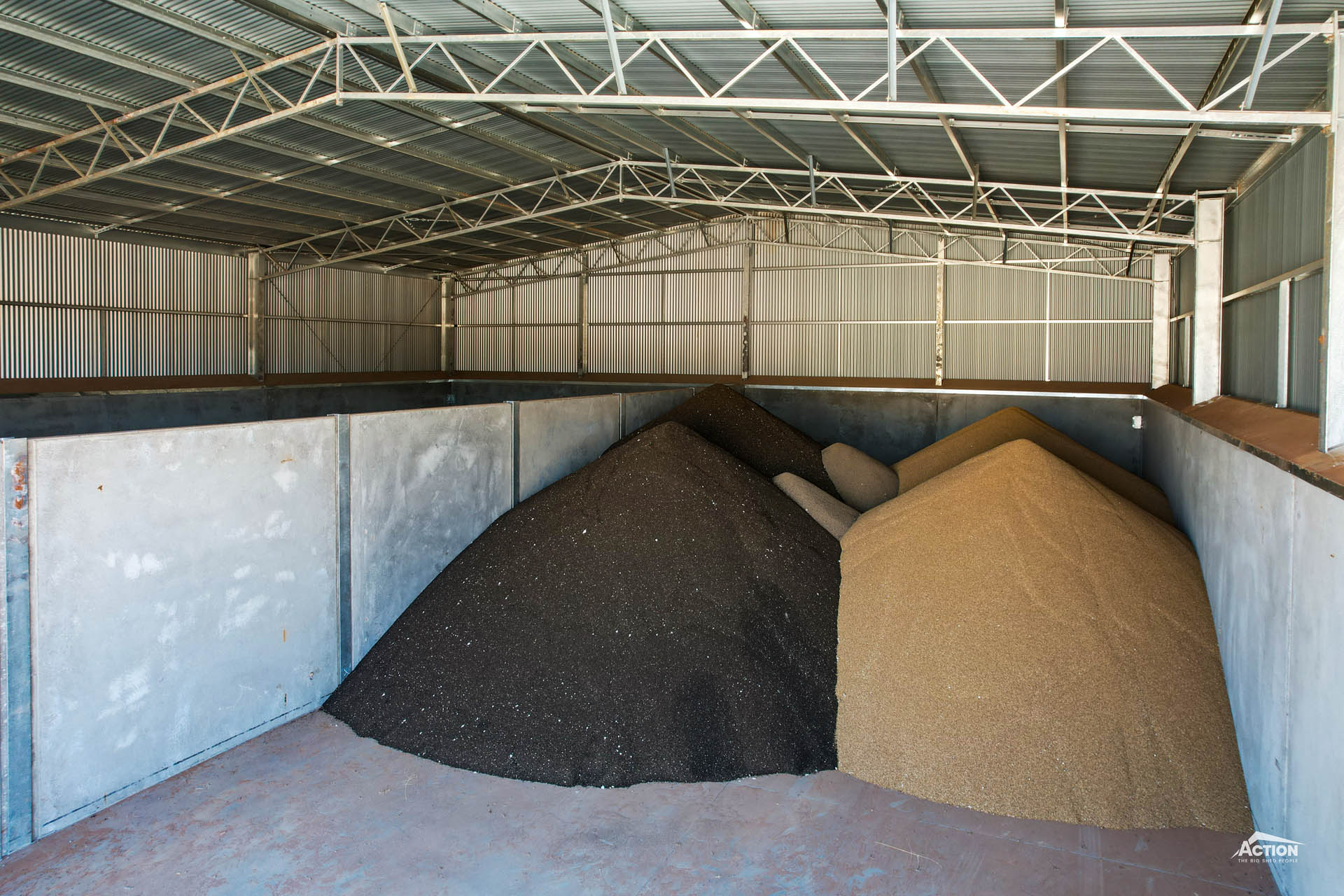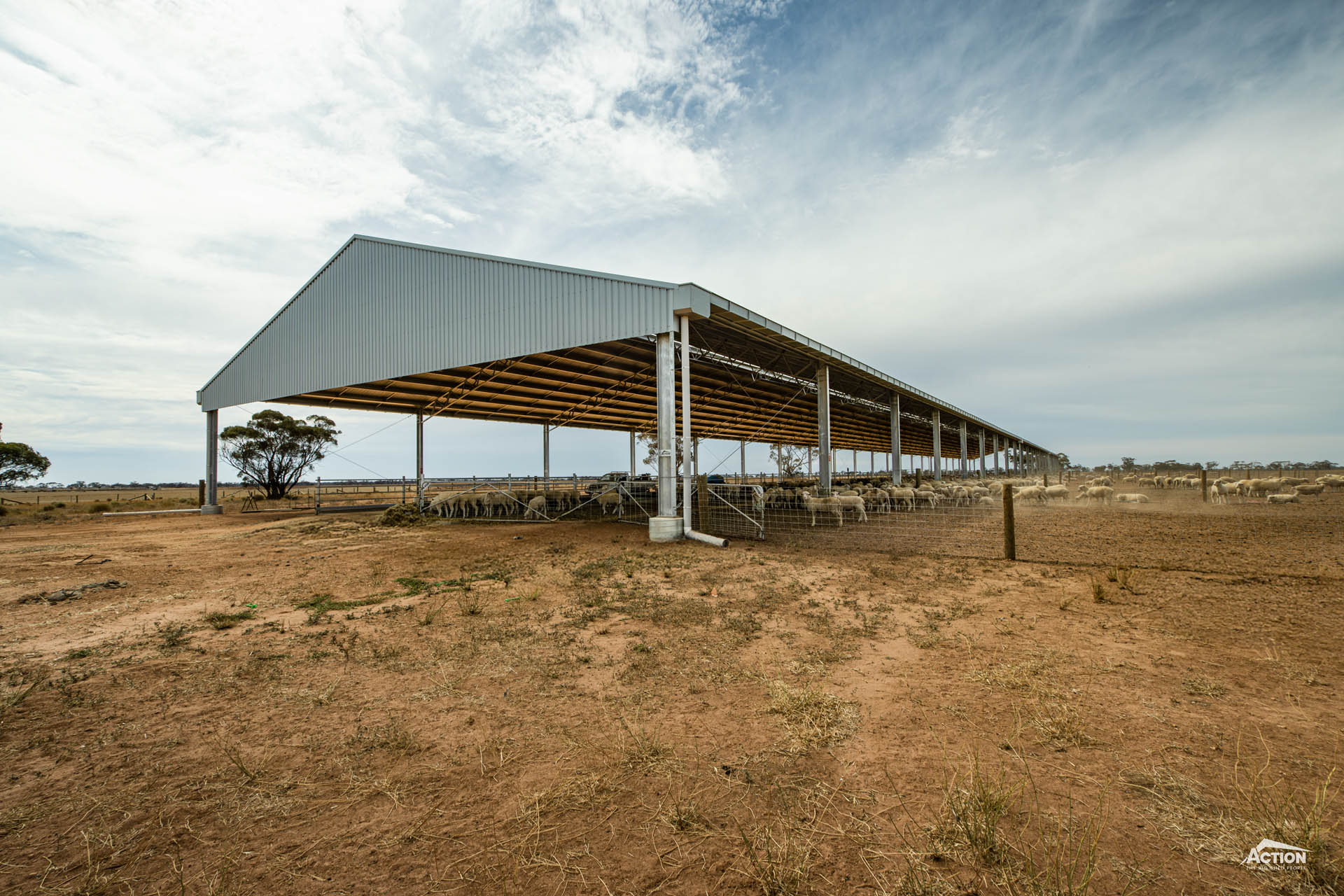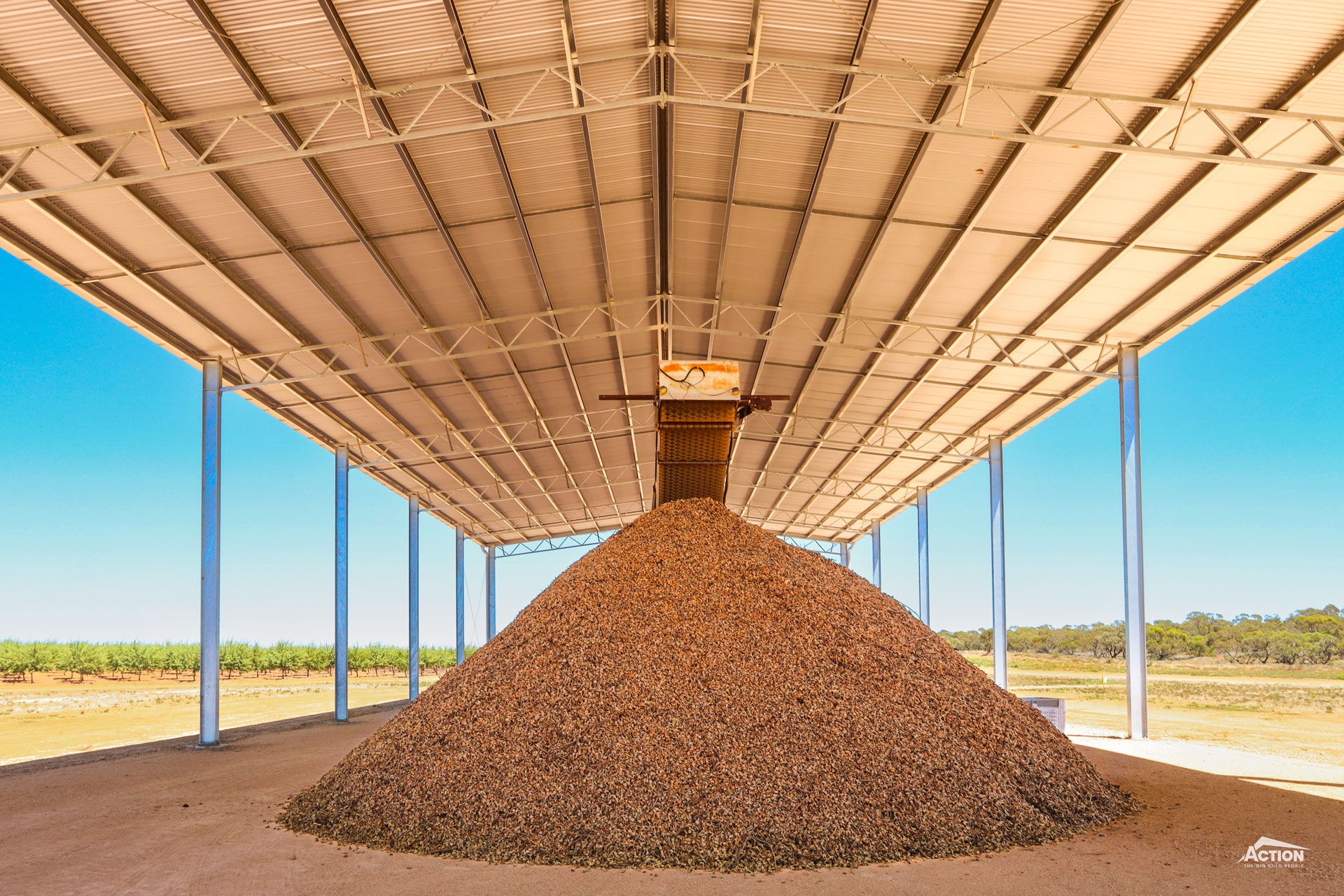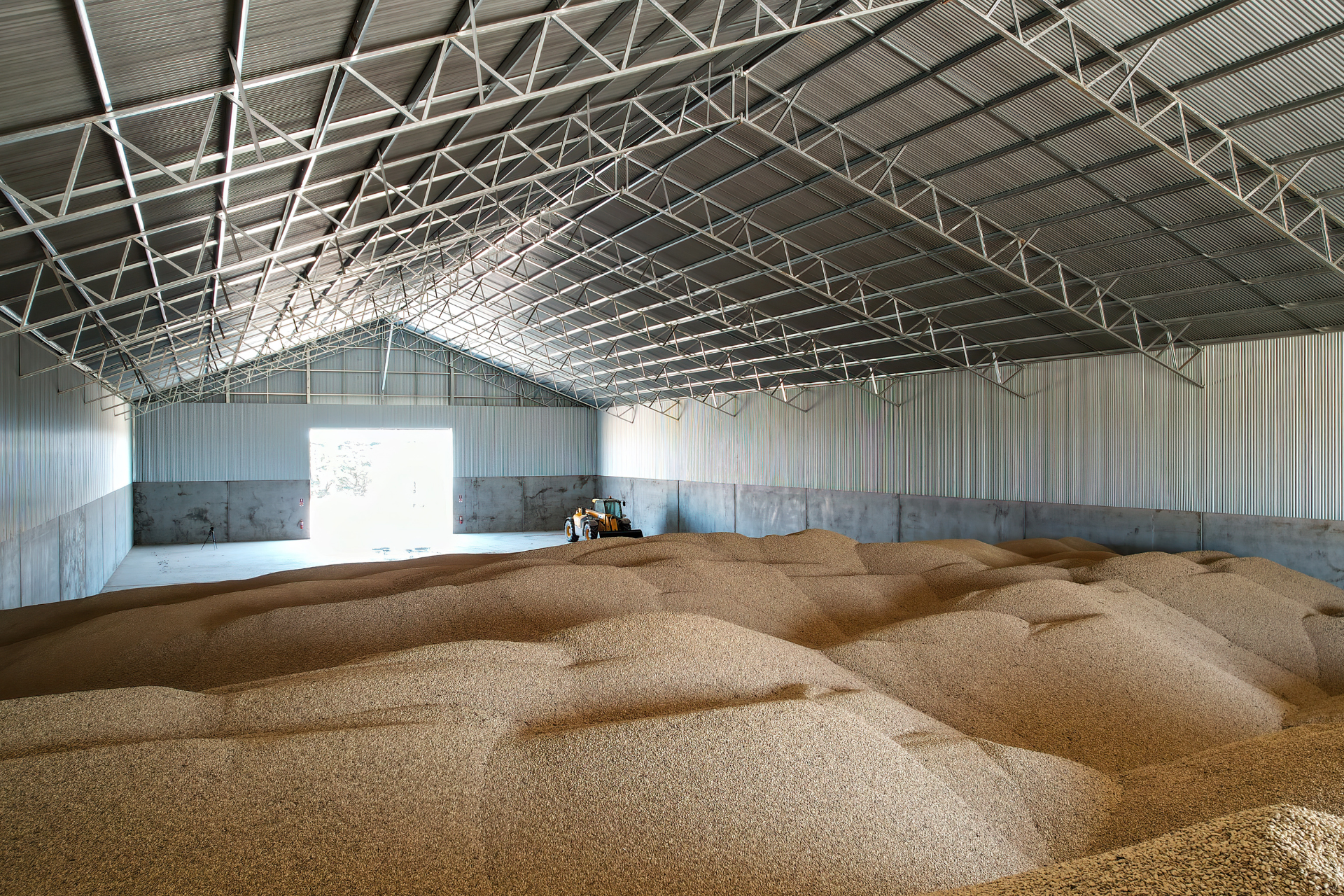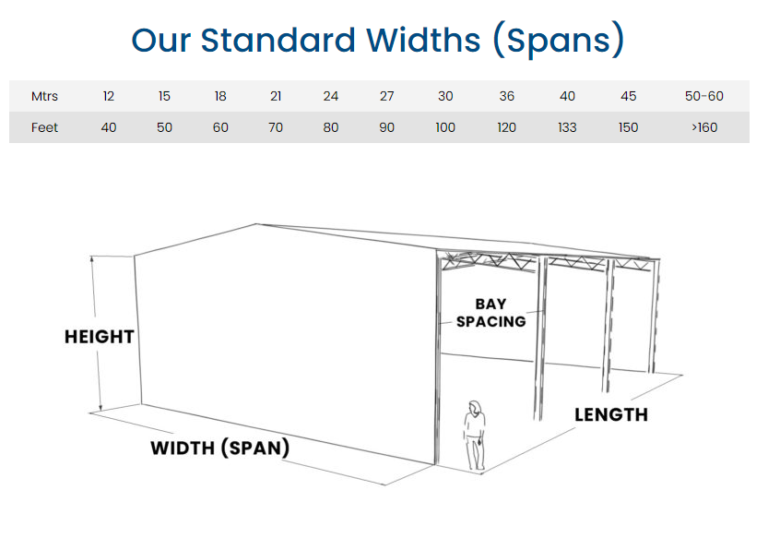Fertiliser storage sheds are in high demand ! This is largely due to volatile fertiliser prices and unreliable supply.
Secure long-term storage for your fertiliser also helps you avoid being held up by fertiliser shortages or delivery delays. And, with volatile fertiliser prices, it could save you money too!
Plus, a fertiliser shed is the recommended way to store fertiliser such as urea, MAP, DAP and DAP blends.
Are you looking to build a new fertiliser shed on your farm? Wondering about the cost to build one?
A large custom-built fertiliser shed can be a significant investment. So, how much does it cost to build a fertiliser shed?
In this article, we discuss exactly that.
Keep reading to learn about current fertiliser shed prices.
Table of Contents
Firstly, we should mention that the smallest dedicated fertiliser storage shed that we manufacture stores around 400 tonnes. Obviously, not everyone requires this much capacity for their fertiliser storage.
If you only need to store a small amount of fertiliser, we recommend installing concrete walls in one or more bays of a multi-use storage shed. Just make sure to check your insurance policies to ensure you are covered for this. And maintain good storage hygiene to avoid contamination and reduce fire risk.
So, now let’s discuss fertiliser shed prices.
How Much Does It Cost To Build A Fertiliser Shed?
Fertiliser Storage Shed Prices
- An 18m x 12m x 6m fully-enclosed fertiliser shed costs approx. $135,000 – $170,000. Stores approx. 400 tonne.
- A 24m x 12m x 6m fully-enclosed fertiliser shed costs approx. $155,000 – $190,000. Stores approx. 600 tonne.
- An 18m x 15m x 6m fully-enclosed fertiliser shed costs approx. $155,000 – $190,000. Stores approx. 600 tonne.
- A 19.5m x 18m x 6m fully-enclosed fertiliser shed costs approx. $160,000 – $210,000. Stores approx. 1,000 tonne.
- A 32m x 18m x 6m fully-enclosed fertiliser shed costs approx. $215,000 – $270,000. Stores approx. 1,200 tonne.
We hope this fertiliser shed price list is a useful budgeting tool for your project. If you would like more accurate pricing, request an obligation-free quote.
Next up we discuss the main factors that influence the cost to build a fertiliser shed.
Factors That Influence The Price Of A Fertiliser Shed
Four main factors will influence how much you will pay for a fertiliser storage shed. These are: design, size, materials and customisation.

1
Design
The fertiliser shed design and configuration that you choose will impact the price of your shed.
A fully enclosed shed design with concrete panels is the most secure way to store granular fertiliser. However, it does have a higher initial cost than just dedicating a few bays of your shed to fertiliser storage.
A fully-enclosed shed is the recommended shed configuration for fertiliser as it provides excellent weather protection.
The majority of fully-enclosed fertiliser sheds we have built either have access from a gable end or doors right along one side. These designs work well with t-walls or l-walls to allow more than one type of fertiliser to be stored in the same shed.
2
Size
Like most construction projects, the size of your fertiliser shed will directly impact the cost. This is simply because the bigger the shed, the more materials and labour that are required – therefore your project will cost more.
Having said that, like grain sheds, the larger the fertiliser shed, the more cost-effective per tonne.
3
Materials
Materials are one of the main contributors to the cost of your project. The main material costs to consider are the structural steel, the cladding, corrosion protection and concrete panels.
So, you might find these articles interesting:
4
Customisation
How Can I Save Money On My Fertiliser Shed?
If you are working to a budget for your fertiliser shed project, there are three main ways that you could save money on your build. These are shed design, shed size and shed builder.

1
Design
The best fertiliser shed design is a fully enclosed configuration with concrete panels.
If you only intend to store small amounts of granular fertiliser it may not be worth building a dedicated fertiliser shed. Instead, one option is to include concrete panels in one or two bays of a storage shed.
You could also consider retrofitting an existing shed with self-supporting concrete walls.
Remember to keep fertiliser and the machinery or produce stored in the shed separated to avoid fires and contamination, though. It would also pay to check that your insurance policy allows co-storing.
One advantage of a large dedicated fertiliser shed to keep in mind is the versatility.
A large-scale fertiliser shed can easily be used as a grain storage shed or machinery shed when fertiliser storage is not a requirement. This makes the shed a cost-effective and versatile investment.
Large scale storage can also protect your enterprise from fluctuating fertiliser prices.

The second way to save money on your project is to choose a standard size span.
2
Standard Sizes
Our standard spans include a range of practical sizes including 18 metres, 24 metres and 27 metres Using a standard size span helps ensure your shed design is cost-effective. This is because a new ‘non-standard’ truss jig does not have to be set up specifically for your project -saving both time and money!
You can learn more about the range here – What Are The Standard Spans For Farm Sheds?
3
Shed Builder
Useful Resources
- Standard Fertiliser Shed Size & Price Guide (PDF Download)
- 2025 Fertiliser Shed Guide (PDF Download)
- Top Fertiliser Shed Questions, Answered (Video)
- 6000 Tonne Shed A Smart Investment For Darcra Farming
That’s a wrap on how much it costs to build a fertiliser shed! We hope you have found this article helpful!
For more articles like this one, check out our Learning Hub which also includes storage calculators and the latest farm shed brochures. Or to discuss your project, give us a call!

